And the revolution will be televised. Today, we announce the launch of the Intrepid Film Photography Award. The Intrepid Camera Co. is a young start-up enabling a new generation of photographers of all kinds to put down their digital cameras and embrace the world of film with their affordable large-format cameras.
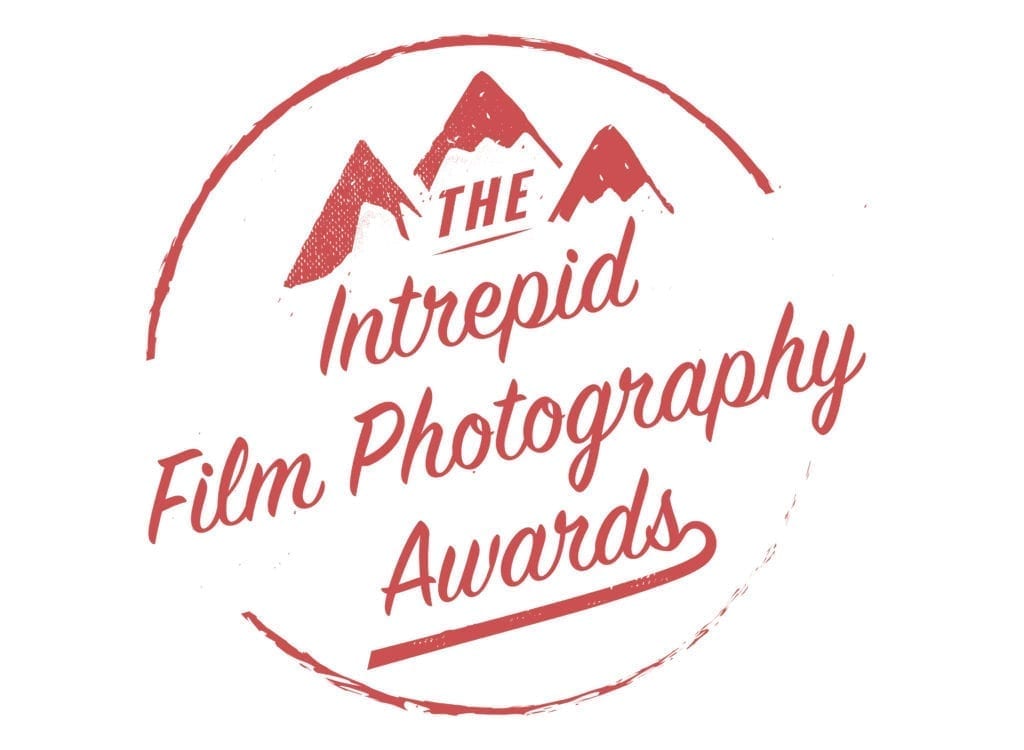
For the next few weeks, we will be sharing a series of articles showcasing the top emerging and established photographers using film today, proving that film is not dead. They choose their strongest photographs and tell us what it is exactly that brings them back to using film time and time again.
Plus, scroll down to the bottom of the article to find out how to submit to the competition and win one of Intrepid’s large-format cameras – it’s free to enter and only open for a week, so don’t miss out!
Lewis Khan
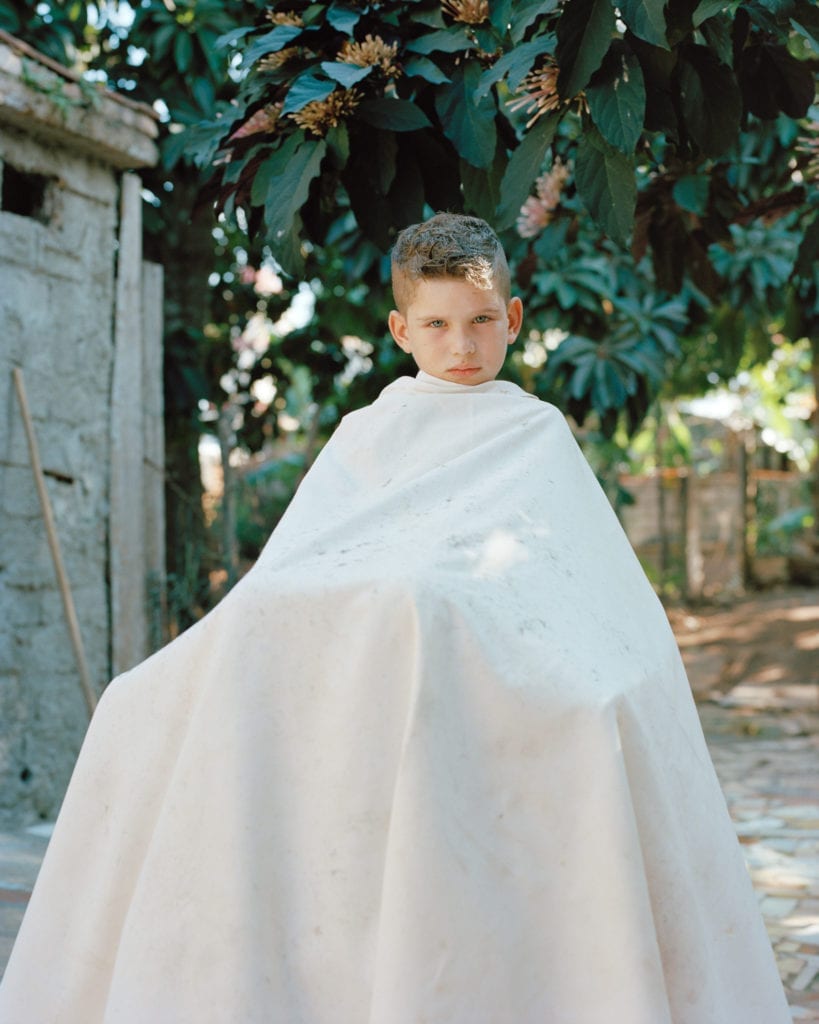
I am a photographer working with stills and moving image, narrative based in realism told through individuals, communities, places.
The Image
This is an image from a project I shot in Cuba a few months ago entitled ‘Fictions’. I photographed a firework festival, using it as a prism to look at larger global concepts like war, nations, and religion. He’s an angel figure in the series. He could also be joining the military; actually his mum just wanted him to look fresh for the festival.
Why Film?
For my personal stills work, I shoot only on film. I’m open to whatever media or medium though – I don’t think the tools used to make a work should define it. The work is the work. But I have found I get the best results when I work with film. I enjoy the slowness of it, the focus required, and also what the images look and feel like.
Joanne Coates
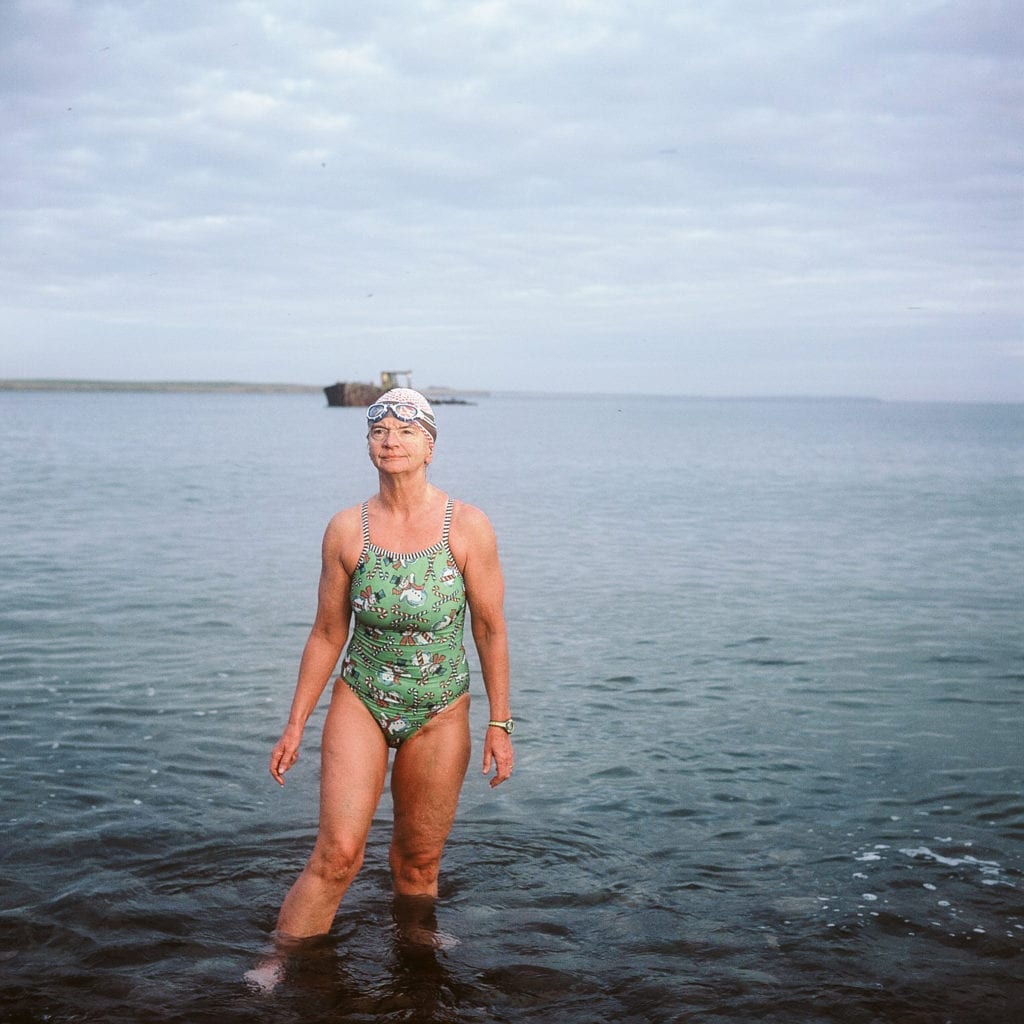
I am a female photographer whose work is deeply rooted in everyday stories, the working class culture and empowerment.
The Image
I find it hard to take an image away from a series. Its meaning becomes severed. This image of the cold water swimmer, Nicki, speaks of more – a friendship, a place, a person and a community. I can’t say it stands alone and defines my work, but it has that soft empowerment of the subject that I feel is key to my practice and who I am personally.
Why Film?
I could never afford an expensive camera. When I finished my foundation degree, my granddad handed me down his medium format camera -it showed someone believed in me and my work. That idea propelled me to using that camera. I’m also quite a shy and awkward person, and when taking portraits I find it easier to be able to slow down, to take time to speak to people and to interact with them as I’m working – which the film camera enables me to do.
I like to use only film where I can. Most of my work is film, albeit for a few commissions which are digital. There is just something about the alchemy and process of film for me. There is a whole experience that comes with using film, that just isn’t there for me with the digital process.
Alan Knox
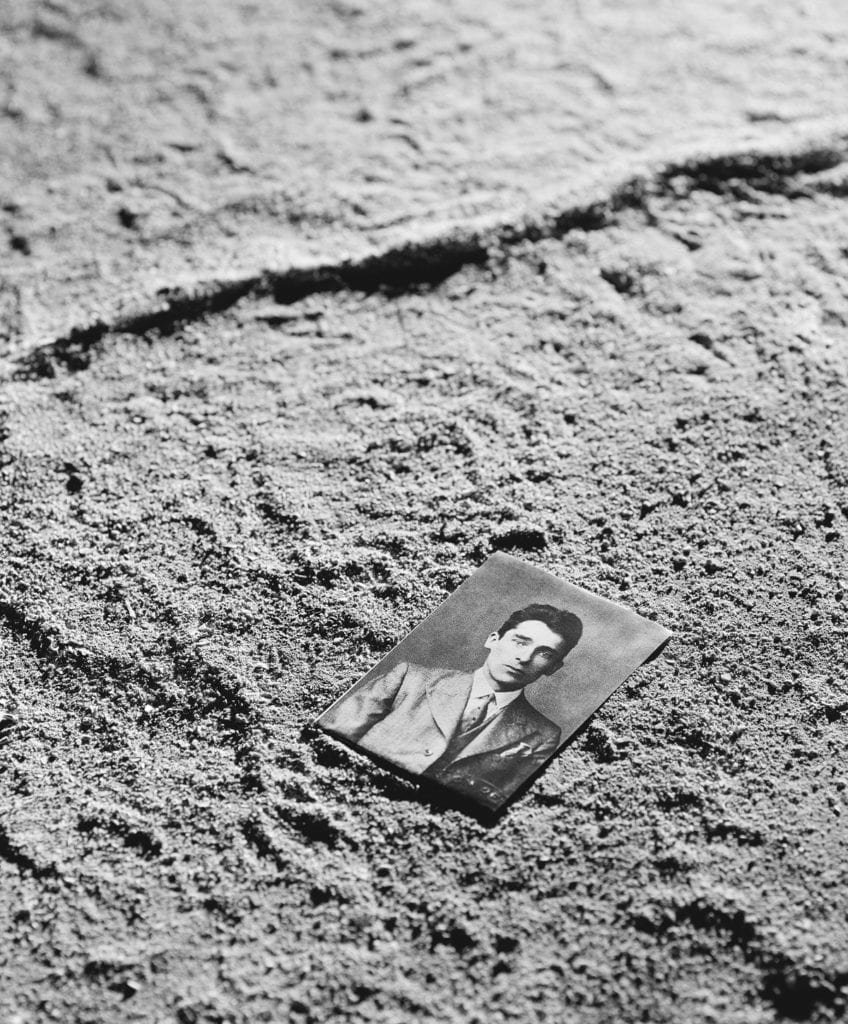
My practice explores themes of the sublime and uncanny in which my role is defined in terms of reconciling a basic human need for wholeness versus the fragmentation of the subject in the photograph.
The Image
A photograph tumbles through space to land on an alien landscape. To create this photo I was inspired by the Apollo 16 astronaut Charles Duke who left a family photograph on the moon. Scattering the ashes of my grandfather, I sought to transform them into a lunar landscape to suggest that we are all inherently cosmic in nature. The photograph of my grandfather was created by the same forces which created the earth, moon and life itself.
Why Film?
My interest in film lies in viewing the analogue negative, and by extension the print as a sublime object which raises to consciousness universal truths not normally visible to human eye. My use of film often involves rephotographing archived family photography in which I seek to trace in the analogue print a material lineage to our origin in the stardust following the Big Bang. In the cosmic particles of film I find evidence of a primordial memory emanating from the birth of the universe.
Sian Davey
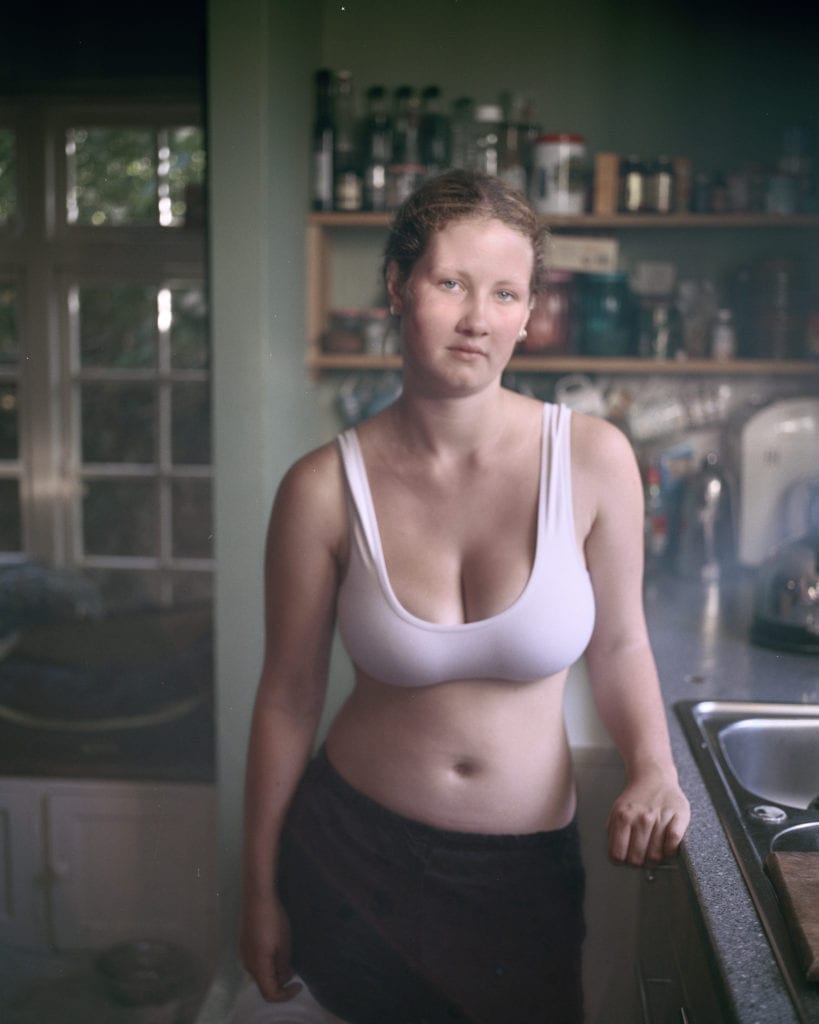
My background is in fine art and social policy. For the past 15 years, I’ve worked as a humanist psychotherapist. My work is an investigation of the psychological landscapes of both myself and those around me. My family and community are central to my practice.
The Image
I have chosen this image because it affects me on so many levels. We have the young woman looking right back at me, her mother. Here she embodies her vitality, her potency and sexuality.
She is neither inhibited or fearful of her forming body. There is an exchange of looks between us, that complex reflected gaze, that is beginning to shift as she tries to define her own sense of self. There is also an irritation present here, she’s on the way somewhere and I ask to hold still for yet another photograph. She’s had enough now and somehow demands, in her teenage surliness, to stop and let her be.
Why Film?
I have only ever used film, so I’m not sure I could accurately compare. I love film for many reasons; I love seeing it in my fridge, because it’s full of expectation and demands something of me.
I have always needed something to look forward to and love surprises – I get this from film. I hold onto it then develop it in batches and look forward to seeing the creative process of the past weeks.
I also never know what the chemistry of this medium gets up to, so it’s beyond my control and often leads me into new ways of thinking. The world isn’t high definition – we don’t experience it physically like that, so I feel film allows for the complexities of life, particularly so for the work that I do.
It also needs relatively little post-production and you’re not left with overwhelming amounts of images to filter. Finally, of course, it’s a meditation and demands absolute presence.
Alexander Mourant
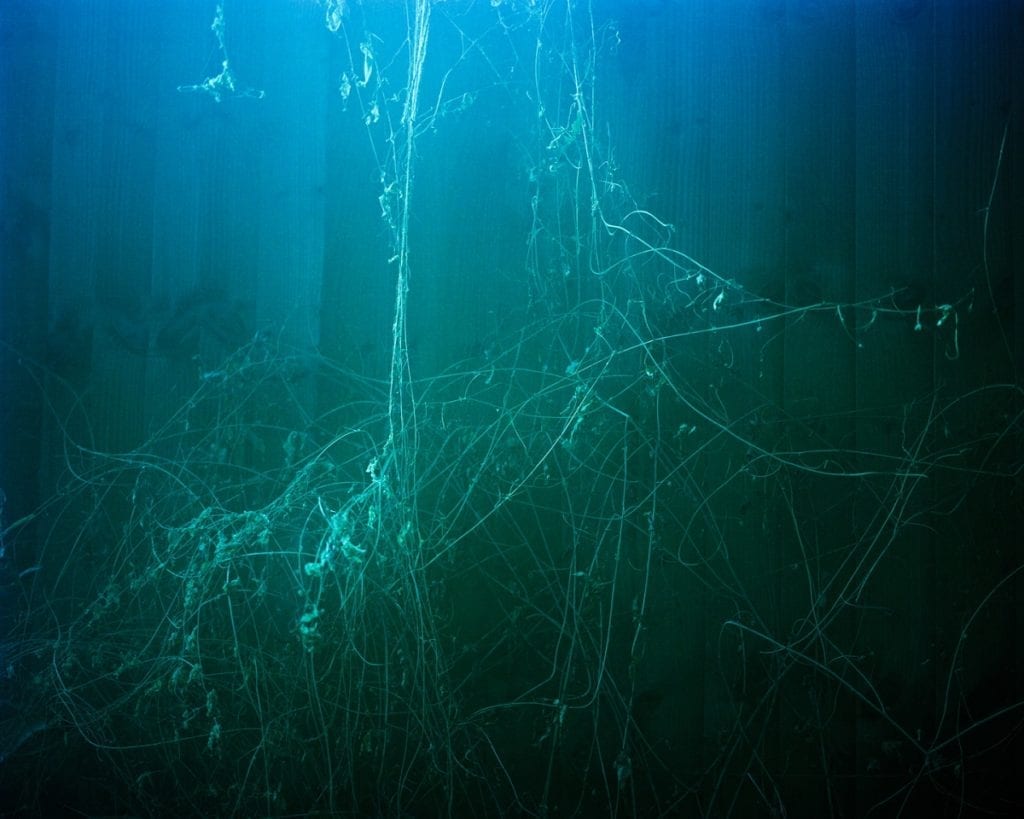
I am an avid reader and, as a result, most of my work draws from literature and experience as an initial starting point for concepts and projects.
The Image
My submitted photograph is an image from a new body of work titled Aurelian. The work was created in response to my four month journey through the heart of Africa. Through the subject of British butterfly houses I explore, probe and represent a subjective view of experience. In a sense, each photograph is autobiographical, helping to decode the fabric of space, essentially how ‘here’ and ‘there’ is in a perpetual dialogue. This photograph in particular suggests, interprets and stimulates a psychological response in the viewer.
Why Film?
For my particular process it is essential to shoot on film. In my conceptual practice I am very interested in materiality—harnessing the impact of atmospheric changes and mistakes on the emulsion—by doing so, through the very physicality of the medium, I can explore the literal and figurative transferral of one ‘space’ into another. With particular reference to this work, I employed degraded and unused analogue film from my travels in Africa. This aspect further supports the notion of transference. A digital camera can never hold this conceptual resonance; film is a physical, tangible and often fragile object. For me, it will always be unique.
Cian Oba-Smith
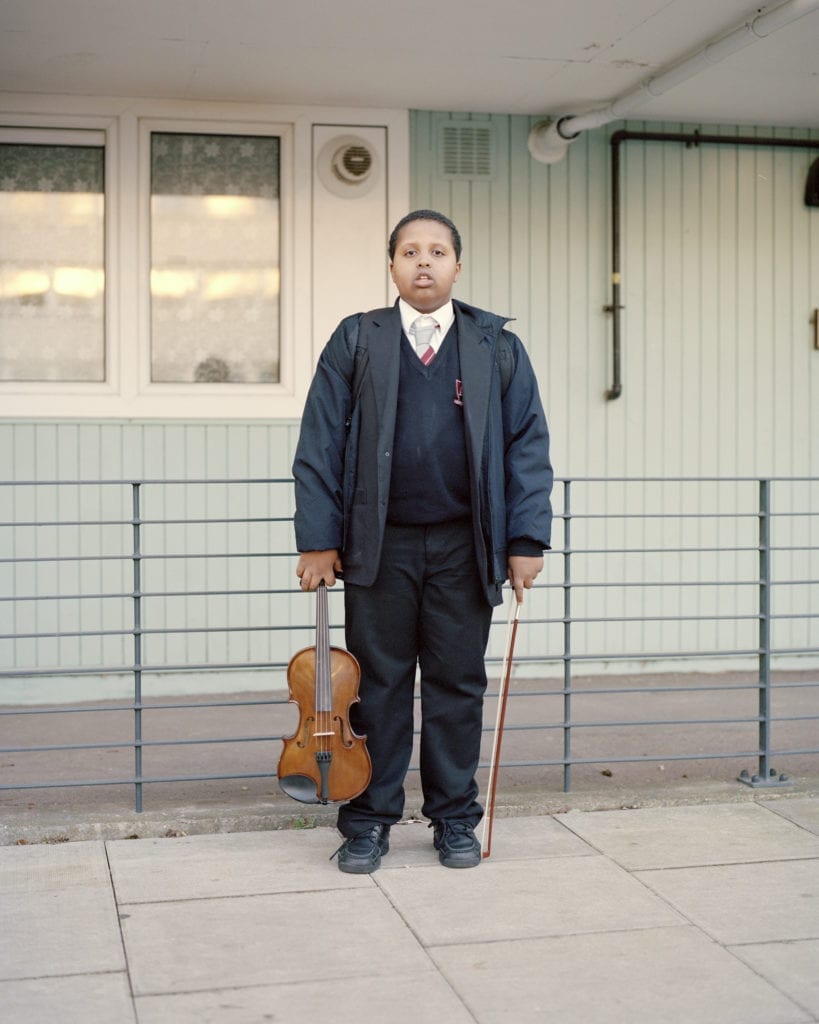
I am an Irish Nigerian photographer, born and raised in London. I make work that stimulates me and challenges stereotypes surrounding race and class; the relationship between human experience and environment is at the core of my work.
The Image
I found it difficult to pick one image as my strongest because different images resonate with me on different levels. I decided to go for this one because, at the time, it really cut through a lot of the other portraits I was making and it seemed to really represent the experience of growing up in London whilst still challenging stereotypes of what it means to be a black kid growing up on a council estate.
Why Film?
I only shoot film. I don’t even own a digital camera apart from my iPhone. The main reason I shoot film is because of how it slows me down when I photograph – in part this is because of the camera I use but it’s mainly due to the fact that there are a limited amount of photographs that I can take on one roll.
In the digital age, photographs have become more disposable, and everyone expects to see things straight away, I find that film is a counter to this way of thinking, because you are forced to wait to see the images. To me this adds value to the photograph.
Theo McInnes
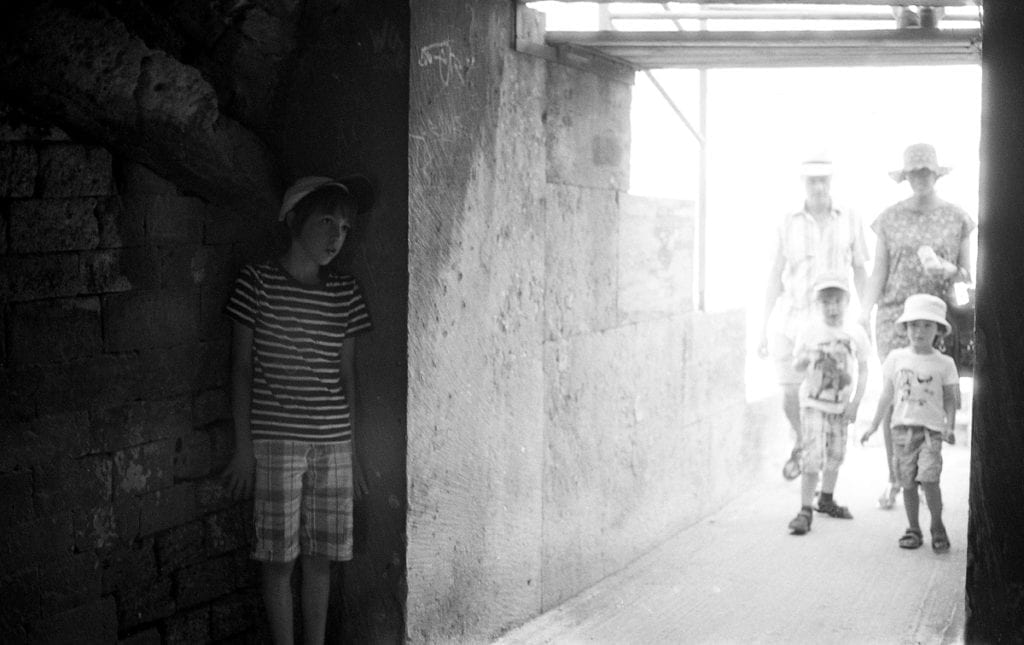
I’m 25, working as a photojournalist in London. My photographic approach is centred around those who relish in non-conformity. When shooting film, my fascination is with the changing face of modern cities, which I engage with through street photography.
The Image
The child stands patient, waiting to engage with his siblings as they step cautiously forward, seemingly aware of him – but not his immediate presence. The moment is also complimented by the composition, the transition of light to dark – the stark contrast of the boy waiting in shadows as his unsuspecting victims move from the light. Primarily the image tells a story of something just before it happens – creating a profound sense of curiosity in what might come next.
Why Film?
Digital cameras are great, but they can make things too easy. You can blow through hundreds of images in moments just to capture one final image. With film that’s not the case – you have to think and patiently wait until finally finding the right instant to press the shutter release. Then there’s the mystery of it – did I get the shot? For me shooting on film is a lot more of a challenge and that’s why I love it. I also prefer the physicality of it – you produce a negative, not just a raw file. I’m quite old school in that way, which is probably why I still collect DVDs.
Emma Uwejoma
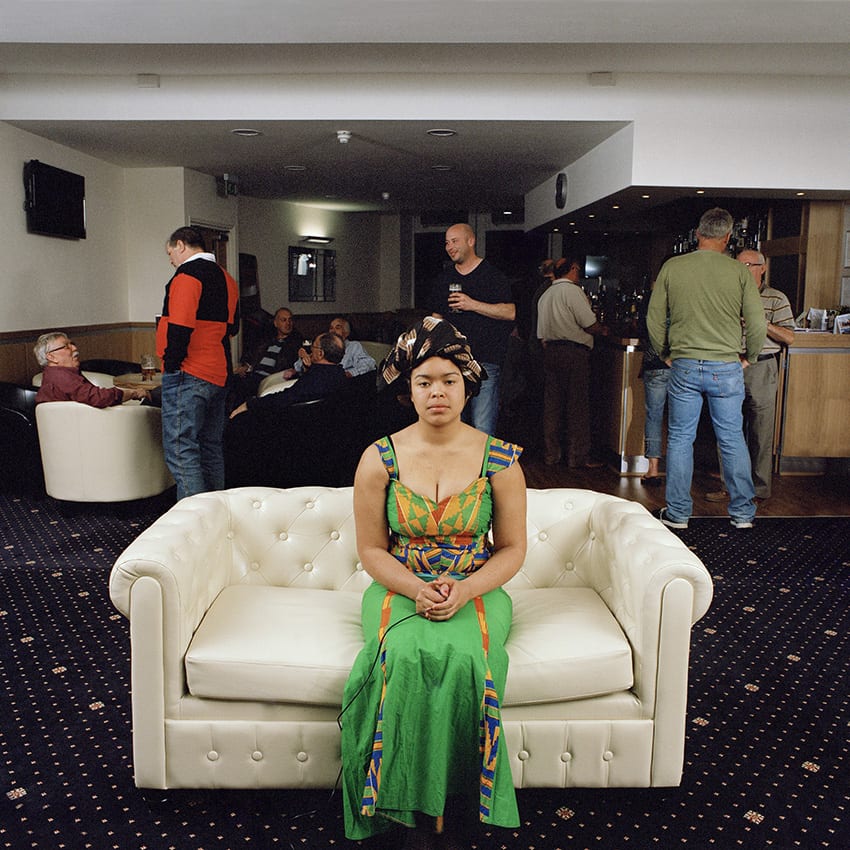
I am a British Nigerian artist whose practice uses self portraiture photography in relation to documenting my identity. I self-analyse my memory of my African heritage in the British presence.
The Image
This best describes who I am. Although the self-portrait was taken over three years ago, the portrait till this day summarises my thoughts and feelings of being a black woman in Britain. The concept behind the self-portrait stemmed from the fact that my Nigerian-born father never spoke of his old home. I was brought up in a house that seemed very English with glimpses of a Nigerian underlay. I have the physical appearance of one culture, yet treated as an outsider from the other.
Why Film?
I prefer to shoot film than digital due to the restriction of the number of frames per roll. Knowing this puts pressure on myself to have more thought when photographing. Am I positioned right? What is actually in my photograph? In the background? I’m more aware of my attention to detail. The anticipation and in some sense annoyance of having to wait for my film to develop. Waiting for film is the familiar feeling to your birthday coming up this week or an up and coming event tomorrow! Oh and the feeling relief when your Bronica hasn’t had another light leak again!
Joseph Conway
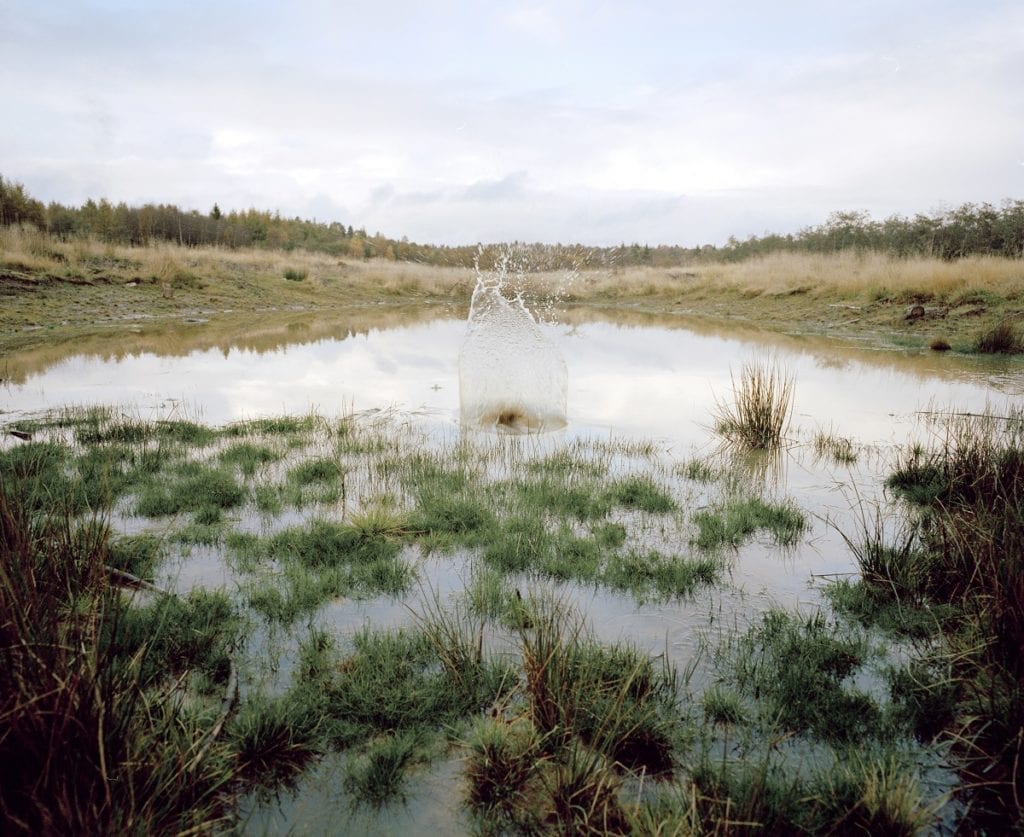
I am originally from Gloucester and studied photography in Brighton. I’m now based in East London. I split my time between commissioned work and personal projects. The work I make is broad but is brought together by an interest in documentary, time and chance.
The Image
I had a strong idea of how I wanted this picture to turn out but didn’t know how many attempts it would take. When I looked at the negatives and saw that it had worked it was brilliant, so it’s remained a personal favourite of mine. It’s a good reminder of the excitement of getting your negs back from the lab. It sits within the rest of the project but think it also works individually and is a good representation of the overall themes of my work.
Why Film?
When shooting film, I slow the pace of my photography down. There is a real feeling of process and purpose to each frame that makes me consider my image more intensely. Film places a financial cost to each frame in a way that digital does not. Rather than find this restrictive I try and to look at it as making me more disciplined and respectful of each frame. For the project this image is from, I also wanted to keep the means of making the work as organic and hands-on as possible, just like the subject matter.
Owen Harvey
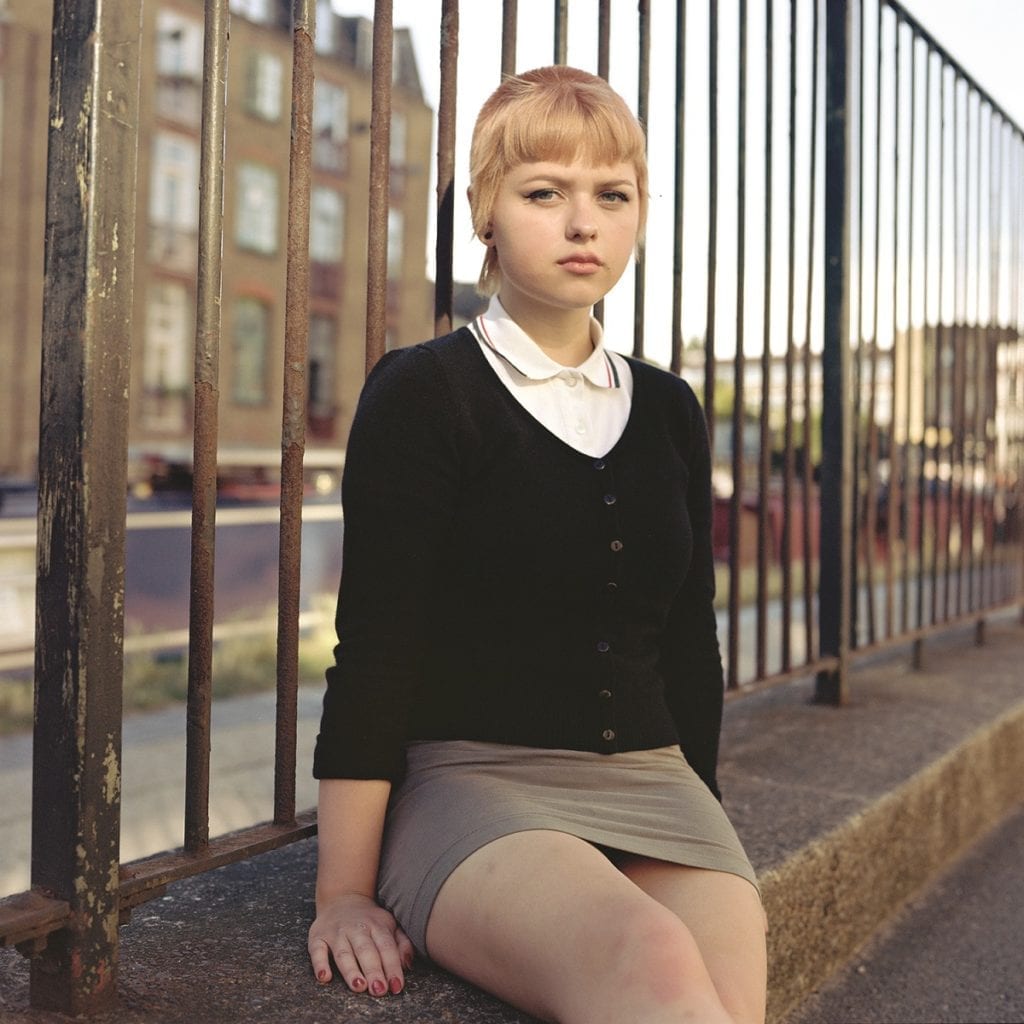
My name is Owen Harvey, I’m a London based photographer often focusing on youth, subculture and identity.
The Image
This image is taken from my personal series Skins & Suedes. I chose this image as I love the quality of light, the disconcerted expression and the strong sense of engagement with the camera. Due to this, I feel Mykie (the sitter of the portrait), looks strong and somehow quite vulnerable at the same time.
Why Film?
I shoot film because I love the process of waiting to see what I have on the rolls. I also love how well it deals with the differences between harsh shadows and highlights and remains details in both.
Stay tuned for the next instalment of our series looking at the top young, emerging and established photographers still using film, coming soon.
And if you use film yourself, we’re launching the Intrepid Film Photography Award!
The Intrepid Film Photography Award will select 3 winners to receive their very own exclusive BJP-engraved limited edition 4×5 camera. Not only that but 50 sheets of film will be provided for each winner to shoot a new body of work, courtesy of Ilford. The three winners will be featured online on the BJP and participate in a showcase based on new work created on the Intrepid Camera, at a full-scale group exhibition in London with production support by Metro Imaging.
This is a quick-fire competition, and you only have 10 days to enter – so submit now!
Sponsored by Intrepid Camera Co.: This feature was made possible with the support of Intrepid Camera Co.. Please click here for more information on sponsored content funding at British Journal of Photography.
